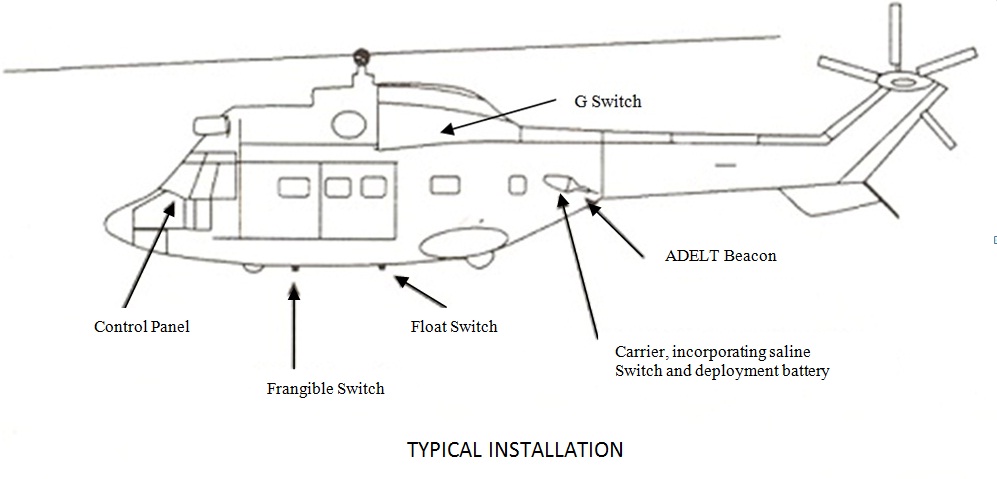

Key Specifications:
Application:

The basic ADELT CPT-606 system comprises the beacon, carrier and ejection mechanism, deployment battery, and control panel. The beacon is contained within the carrier and mounted externally at a suitable location. The control panel provides for testing of system integrity, system arming, crew activation, and deployment confirmation. Various remote activation devices may be incorporated in the installation design, such as frangible, float, inertia, saline, or hydrostatic switches. At least one sensor should couple with the deployment battery to avoid dependency on the aircraft electrical supply. When operated, whether by crew or remote sensor activation, a small cartridge triggers the release of two coiled springs, which eject the beacon safely away from the aircraft. Once upright and in the water, the beacon will automatically transmit homing signals on 121.5 / 243 MHz, while the transponder reacts to aircraft or ship's radar, pinpointing its position on the search vessel's radar screen.
Technical Specifications:
| Homing Beacon: | 121.5/243 MHz, 300mW |
| Transponder: | 9 GHz, 50 dBm, 400-800 mW |
| Operating Battery: | 15V Lithium, 3 year service life |
| Deployment Battery: | 12V Lithium, 2 year service life |
| Colour: | International Orange |
| Ejection Velocity: | 8 metres / second |
| Carrier Footprint: | 140 sq.ins approx. |
| Weight: | 10 Kgs approx. |
